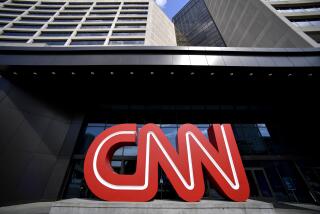Hanging On the Web by a Thread
- Share via
The World Wide Web is so big, it’s impossible to read more than a fraction of everything available online.
Good thing, too, because more and more sites are starting to charge fees for access to their data. Others are cutting back and still others are going out of business.
Among those sites now requiring paid subscriptions are the Wall Street Journal Interactive, Microsoft’s online magazine Slate and Business Week magazine.
One recent casualty is Word, a well-regarded site devoted to arts and culture that went under in March. (It has recently been sold and is scheduled to come back online.) Another site called the Hub, formerly operated by America Online, also closed in March.
Layoffs and cutbacks have been announced at a variety of Web sites that remain online, including Microsoft’s Sidewalk.
Could all this be the beginning of the long-discussed shakeout among Internet publishers?
Probably not, says Steve Outing, an online publishing consultant and new media analyst. But, he adds, it does suggest turmoil ahead as the Internet matures as a medium for both publishing and electronic commerce.
“We’re still really in our infancy in this industry. I think it’s still really hard to figure out where we’re going,” said Outing, a former journalist now living and working in Boulder, Colo.
The root of the problem, of course, is money. While new users continue to find their way onto the Internet in staggering numbers, no publisher has devised a sure-fire way to earn money from those readers.
The Wall Street Journal’s interactive edition, which charges $49 for a one-year subscription, seems to have come closest. It recently reported having 200,000 subscribers, which would give it subscription revenue of just under $10 million.
But in addition to having one of the publishing world’s strongest brand names, the Wall Street Journal also specializes in a type of information that many people use in their work. Thus, it’s likely many of those subscriptions are being paid out of corporate accounts, rather than by individual consumers. Few sites have that advantage.
A good sign for many publishers is that Internet advertising is beginning to pick up. Internet advertising reached an estimated $600 million last year and is expected to continue to grow rapidly as electronic commerce takes hold.
But most online newspapers and other Internet publications are losing money. The question is: How long can they afford to keep it up?
Quite a while, said Outing, who recently talked to many industry insiders at the annual Interactive Newspapers conference in Seattle.
It’s especially imperative for newspapers to figure out this new online medium or risk losing their audience and their advertisers, Outing said.
More to Read
Inside the business of entertainment
The Wide Shot brings you news, analysis and insights on everything from streaming wars to production — and what it all means for the future.
You may occasionally receive promotional content from the Los Angeles Times.










